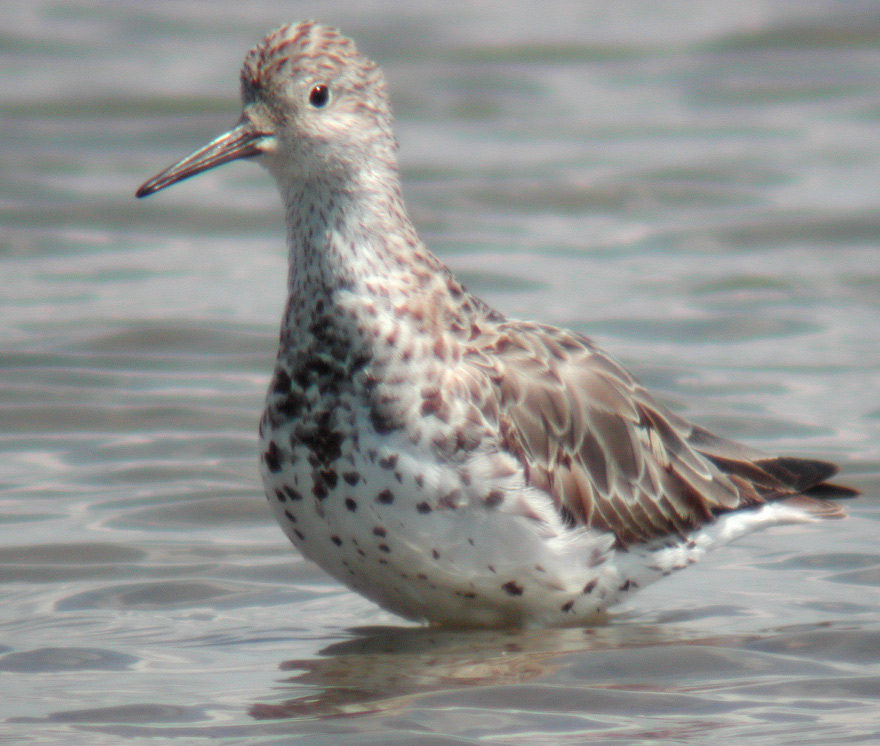- Great Knot
status = LC | status_system = IUCN3.1
regnum =Animal ia
phylum = Chordata
classis = Aves
ordo =Charadriiformes
familia =Scolopacidae
genus = "Calidris"
species = "C. tenuirostris"
binomial = "Calidris tenuirostris"
binomial_authority = Horsfield,1821 The Great Knot, "Calidris tenuirostris", is a smallwader . It is the largest of thecalidrid species.Their breeding habitat is
tundra in northeastSiberia . They nest on the ground laying about four eggs in a ground scrape. They are strongly migratory wintering on coasts in southernAsia through toAustralia . This species forms enormous flocks in winter. It is a rare vagrant to westernEurope .This species has short dark legs and a medium-length thin dark bill. Breeding adults have mottled greyish upperparts with some rufous feathering. The face, throat and breast are heavily spotted black, and there are also some streaks on the rear belly. In winter the plumage becomes uniformly pale grey above.
This bird is closely related to the more widespread
Red Knot . In breeding plumage, the latter has a distinctive red face, throat and breast. In other plumages, the Great Knot can be identified by its larger size, longer bill, deeper chest, and the more streaked upperparts.These birds forage on mudflats and beaches, probing or picking up food by sight. They mainly eat
mollusc s andinsect s.The Great Knot is one of the species to which the "Agreement on the Conservation of African-Eurasian Migratory Waterbirds" (
AEWA ) applies.Conservation Status
Australia
Great Knot are not listed as threatened on the
Environment Protection and Biodiversity Conservation Act 1999 .tate of Victoria, Australia
* Great Knot are listed as threatened on the Victorian
Flora and Fauna Guarantee Act (1988) . [ [http://www.dse.vic.gov.au/DSE/nrenpa.nsf/LinkView/EADA0F1874AF9CF24A2567C1001020A388BBA5581CF9D859CA256BB300271BDB Department of Sustainability and Environment, Victoria] ] Under this Act, an "Action Statement" for the recovery and future management of this species has not been prepared. [ [http://www.dse.vic.gov.au/DSE/nrenpa.nsf/LinkView/617768308BCB666E4A25684E00192281E7A24BB36FF60A144A256DEA00244294 Department of Sustainability and Environment, Victoria] ]* On the 2007 advisory list of threatened vertebrate fauna in Victoria, this species is listed as
endangered .cite book | author = Victorian Department of Sustainability and Environment | title = Advisory List of Threatened VertebrateFauna in Victoria - 2007 | publisher = Department of Sustainability and Environment | date = 2007 | location = East Melbourne, Victoria | pages = 15 | url = | id = ISBN 978-1-74208-039-0 ]References
* Database entry includes justification for why this species is of least concern
*"Shorebirds" by Hayman, Marchant and Prater ISBN 0-7099-2034-2External links
* [http://www.oiseaux.net/birds/photos/great.knot.html Oiseaux] Photos
Wikimedia Foundation. 2010.

